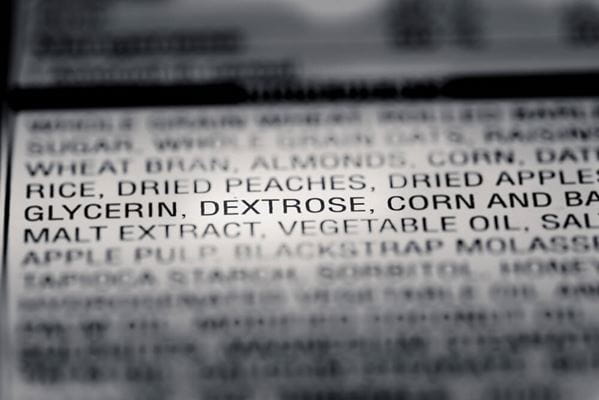The U.S. Food and Drug Administration (FDA) tells us that, on average, each of us consumes 57 pounds of added sugars each year. Go to your pantry and take a look at what a five-pound bag of sugar looks like, and then think about downing 11 of those in addition to the sugars that are already in our foods naturally. Yikes!
Check nutrition info
Added sugars are hard to avoid, even if you read nutrition labels. Just because the ingredients list doesn’t include the word “sugar” doesn’t mean that a food is free of added sugars—in fact, there are dozens of names that food manufacturers can use to describe the refined sugars added to food. In addition, even though the total amount of sugars per serving must be listed on the packaging, there’s no way to tell how much of that is naturally occurring sugar in wholesome ingredients, and how much is simply added for taste.
Names for sugars
While we can’t list every possible name for sugar, you can use this list as a cheat sheet to help you identify added sugars on ingredient lists. Any of these words or parts of words on a nutrition label means that sugars were added (we’ve printed them in bold for you):
There are three simple sugars, called “monosaccharides,” found in nature:
- Glucose (also known as dextrose), the most common sugar, found in most plant-based foods
- Fructose (also known as fruit sugar), found in fruits, flower, berries, honey and root vegetables
- Galactose, a building block of the more well-known lactose, a milk sugar
When two of these simple sugars combine, they form a disaccharide (double sugar). The most common of these are:
- Sucrose (glucose + fructose)
- Lactose (glucose + galactose)
- Maltose (glucose + glucose)
Larger sugar molecules are known as polysaccharides, and here’s where the list gets really long, because they may be listed by their chemical names (such as maltodextrin) or by their common names (e.g. corn syrup).
- Anything with “syrup” such as corn syrup, maple syrup or high-fructose corn syrup
- Dextrose, dextrin or other names that include these
- Most names that include “juice,” like evaporated cane juice or fruit juice concentrate
- Honey
- Molasses
- Raw sugar, cane sugar or any other name that includes “sugar”
- Corn sweetener
- Nectar
- Names that include “malt” like maltodextrin or malted barley
- Names that end in “-ose,” like pentose or zylose
- Names that end in “-ol,” like mannitol, carbitol, inversol or xylitol (these are sugar alcohols)
- Diglycerides
- Any saccharides, disaccharides, polysaccharides or oligosaccharides
- Treacle
- Caramel
- Muscovado
- Sucanat
- Turbinado
One trick to estimating how much added sugar is in a food is to look at how high the named sugar is on the ingredients list. The higher an ingredient is on the list, the greater percentage it is of the whole food product. But, keep in mind that there may be several types of sugar listed, and though each may be far down on the list, they’ll add up to a larger amount of total sugar.




